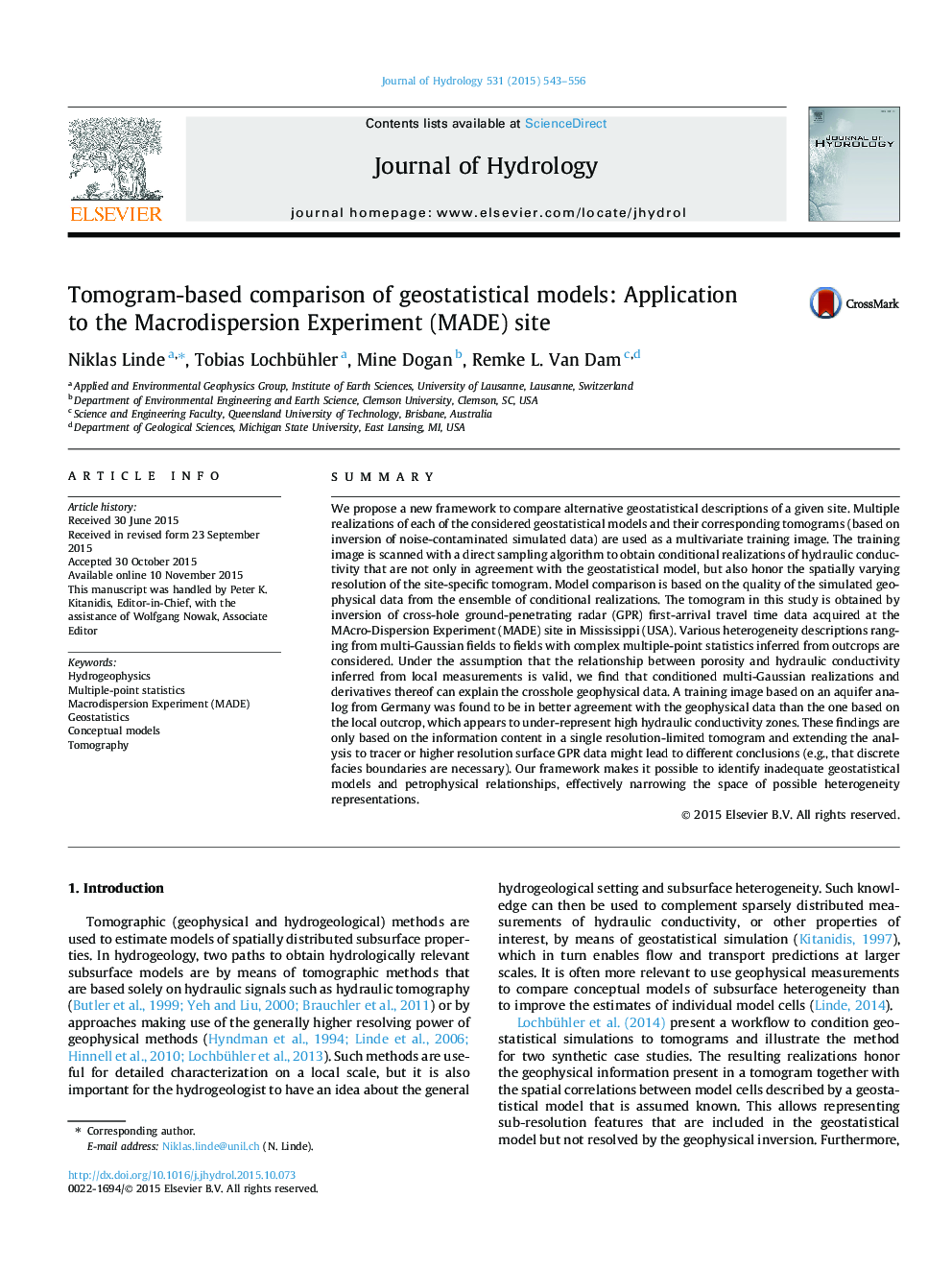| کد مقاله | کد نشریه | سال انتشار | مقاله انگلیسی | نسخه تمام متن |
|---|---|---|---|---|
| 6409817 | 1332874 | 2015 | 14 صفحه PDF | دانلود رایگان |

- Tomogram-based conditioning can falsify inappropriate conceptual subsurface models.
- Alternative geostatistical descriptions of the MADE site are compared.
- Site-specific relations relate hydraulic conductivity fields to GPR tomograms.
- Multi-Gaussian and other continuous fields are in agreement with the GPR data.
- A conceptual model based on a local outcrop is found to be inappropriate.
SummaryWe propose a new framework to compare alternative geostatistical descriptions of a given site. Multiple realizations of each of the considered geostatistical models and their corresponding tomograms (based on inversion of noise-contaminated simulated data) are used as a multivariate training image. The training image is scanned with a direct sampling algorithm to obtain conditional realizations of hydraulic conductivity that are not only in agreement with the geostatistical model, but also honor the spatially varying resolution of the site-specific tomogram. Model comparison is based on the quality of the simulated geophysical data from the ensemble of conditional realizations. The tomogram in this study is obtained by inversion of cross-hole ground-penetrating radar (GPR) first-arrival travel time data acquired at the MAcro-Dispersion Experiment (MADE) site in Mississippi (USA). Various heterogeneity descriptions ranging from multi-Gaussian fields to fields with complex multiple-point statistics inferred from outcrops are considered. Under the assumption that the relationship between porosity and hydraulic conductivity inferred from local measurements is valid, we find that conditioned multi-Gaussian realizations and derivatives thereof can explain the crosshole geophysical data. A training image based on an aquifer analog from Germany was found to be in better agreement with the geophysical data than the one based on the local outcrop, which appears to under-represent high hydraulic conductivity zones. These findings are only based on the information content in a single resolution-limited tomogram and extending the analysis to tracer or higher resolution surface GPR data might lead to different conclusions (e.g., that discrete facies boundaries are necessary). Our framework makes it possible to identify inadequate geostatistical models and petrophysical relationships, effectively narrowing the space of possible heterogeneity representations.
Journal: Journal of Hydrology - Volume 531, Part 3, December 2015, Pages 543-556